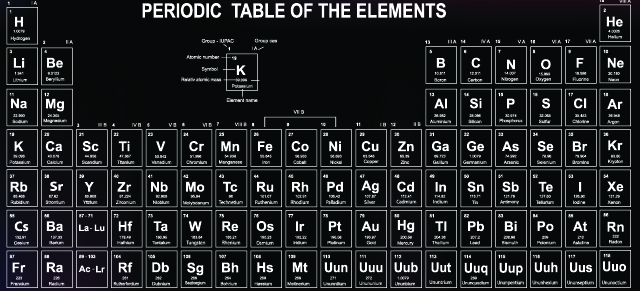An international team of researchers has just published a paper confirming the existence of element number 117 — ununseptium. It’s the heaviest element ever created, with an atom of ununseptium outweighing an atom of lead by 40 per cent. Make some room on your periodic table, there’s a new metal in town.
72 scientists and engineers from 16 institutions around the world collaborated to confirm element 117’s existence. The metal was first reported by a team of Russian and American scientists in 2010. Now it’s confirmed, and it took a whole lot of work to get there.
Superheavy elements, those beyond atomic number 104 on the periodic table, aren’t observed in nature. They can only be created by blasting two different types of nuclei at each other in a particle accelerator, and hoping that a few of them fuse together. In the case of ununseptium, that meant aiming a beam of calcium 48 ions at a chunk of berkelium 249.
Even the ingredients in this heavy metal recipe are challenging: the 13mg berkelium 249 sample used in the study took 18 months to synthesise, and with a half-life of only 330 days, once the sample was created the race was on.
But it all panned out: the team, working at GSI Helmholtz Centre for Heavy Ion Research, an accelerator laboratory located in Darmstadt, Germany, observed the creation of four atoms of element 117, though they decayed into other elements within milliseconds.
Now that the element has been observed in multiple experiments, it goes up for review: the International Unions of Pure and Applied Physics and Chemistry will decide whether the evidence is strong enough to permanently add the element to the periodic table. If they approve it, element 117 will get a proper name — “ununseptium” is just a place holder, derived from the Latin for “one one seven”.
While “created the heaviest metal ever” sounds like a pretty badass accomplishment in itself, the real importance of this discovery is that it furthers our knowledge about an unexplored region of the periodic table. While element 117 decayed almost immediately, it produced isotopes that remained stable for hours. “This is of paramount importance as even longer-lived isotopes are predicted to exist in a region of enhanced nuclear stability,” explains Professor Christoph Düllmann, who led the study.
Rock on, science. [Physical Review Letters via Engadget; PhysOrg]
Image: Shutterstock /charobnica
